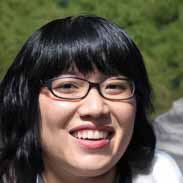Chapter 4 – Space Flashcard
Unlock all answers in this set
Unlock answersquestion
Which of the following kinds of object resides closest to the Sun on average?
answer
asteroids
question
Planetary orbits are
answer
fairly circular and in the same plane.
question
How many of the planets orbit the Sun in the same direction as Earth does?
answer
all
question
Which have more moons on average?
answer
jovian planets
question
All four of the giant outer planets-Jupiter, Saturn, Uranus, and Neptune-have rings.
answer
True
question
All the planets in the solar system have at least one moon.
answer
False
question
The more massive planets in the solar system tend to be less dense than the lower mass planets.
answer
True
question
All the planets in the solar system rotate in the same direction as they orbit the Sun.
answer
False
question
Suppose the Sun were suddenly to shrink in size but that its mass remained the same. According to the law of conservation of angular momentum, what would happen?
answer
The Sun would rotate faster than it does now.
question
Which planet listed below has the most extreme seasons?
answer
Uranus
question
The following statements are all true. Which one counts as an "exception to the rule" in being unusual for our solar system?
answer
The diameter of Earth's Moon is about 1/4 that of Earth.
question
Which of the following lists the planets of our solar system in the correct order from closest to farthest from the Sun?
answer
Mercury, Venus, Earth, Mars, Jupiter, Saturn, Uranus, Neptune
question
The planet in our solar system with the highest average surface temperature is ________.
answer
Venus
question
Which of the following is not a characteristic of the outer planets?
answer
They have very few, if any, satellites.
question
The terrestrial planets are made almost entirely of elements heavier than hydrogen and helium. According to modern science, where did these elements come from?
answer
They were produced by stars that lived and died before our solar system was born.
question
Which ingredients made up about 98% of the solar nebula?
answer
hydrogen and helium
question
In which list are the major steps of solar system formation in the correct order?
answer
gravitational collapse of the solar nebula, condensation, accretion
question
Which of the following changes did not occur during the collapse of the solar nebula?
answer
concentrating denser materials nearer the Sun
question
What is the leading hypothesis for the origin of the Moon?
answer
It formed from the material ejected by a giant impact on Earth.
question
Which of the following types of material can condense into what we call ice at low temperatures?
answer
hydrogen compounds
question
What do we mean by the frost line when we discuss the formation of planets in the solar nebula?
answer
It is a circle at a particular distance from the Sun, beyond which the temperature was low enough for ice to condense.
question
According to our theory of solar system formation, what are asteroids and comets?
answer
leftover planetesimals that never accreted into planets
question
What is the giant impact hypothesis for the origin of the Moon?
answer
The Moon formed from material blasted out of Earth's mantle and crust by the impact of a Mars-size object.
question
Suppose you start with 1 kilogram of a radioactive substance that has a half-life of 10 years. Which of the following statements will be true after 20 years pass?
answer
You'll have 0.25 kilogram of the radioactive substance remaining.
question
According to modern scientific dating techniques, approximately how old is the solar system?
answer
4.5 billion years
question
All planets orbit the Sun in the same direction (counterclockwise as viewed from above Earth's North Pole).
answer
True



